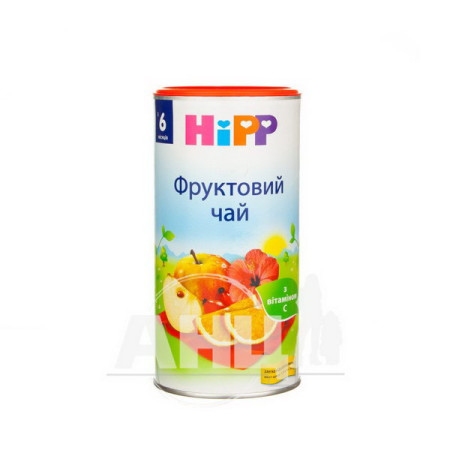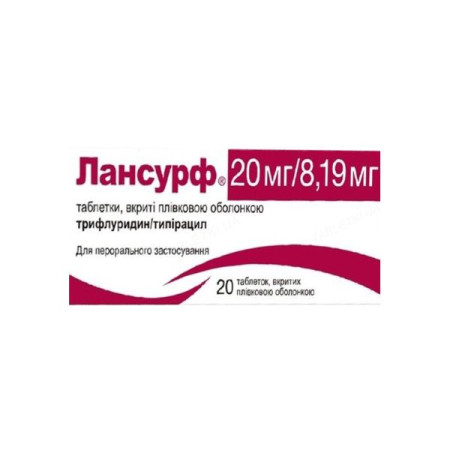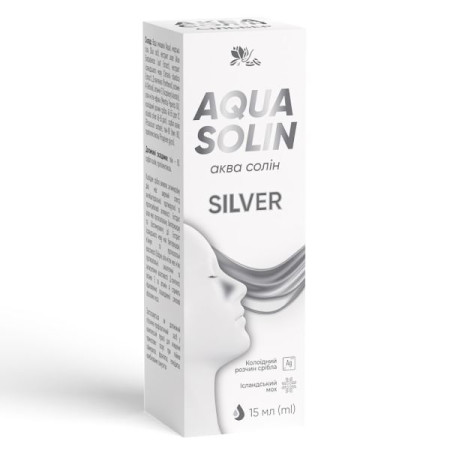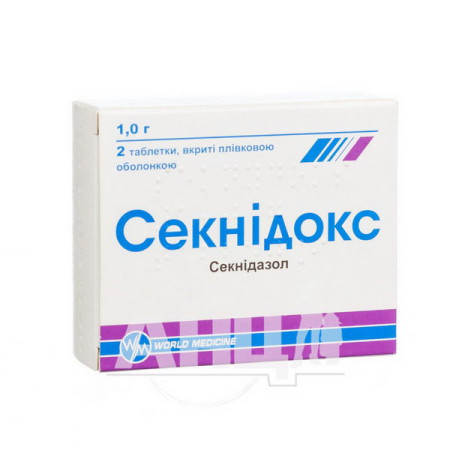Levomycetin tablets 500 mg blister No. 10

Translation of the instructions can be
LEVOMYCETINE tablets 500 mgInstruction
For medical use of the medicinal product
Composition:
Active ingredient: chloramphenicol;
1 tablet contains chloramphenicol (calculated on 100% dry matter) - 500 mg;
excipients: corn starch, microcrystalline cellulose, crospovidone, croscarmellose sodium, calcium stearate.
Dosage form.
Pills.
Main physicochemical properties: round tablets, white or white with a yellowish tinge, with a flat surface, a score and a bevel. The presence of barely noticeable yellow inclusions is allowed.
Pharmacotherapeutic group.
Antibacterials for systemic use. amphenicols. chloramphenicol. atx code j01b a01.
Pharmacological properties.
Pharmacodynamics.
Chloramphenicol (Chloramphenicol), a broad-spectrum antibiotic, has a bacteriostatic effect. In high concentrations or against highly sensitive microorganisms, it can have a bactericidal effect. Being fat-soluble, chloramphenicol penetrates the cell membrane of bacteria and reversibly binds to the 50S subunit of bacterial ribosomes, in which the movement of amino acids to growing peptide chains is delayed (possibly as a result of inhibition of peptidyltransferase activity), as a result of which the formation of peptide bonds and subsequent protein synthesis are disrupted.
Active against Escherichia coli, Shigella dysenteria spp., Shigella flexneri spp., Shigella boydii spp., Shigella sonnei spp., Salmonella spp. (including Salmonella typhi), active against Streptococcus spp. (including Streptococcus pneumoniae), Neisseria gonorrhoeae, Neisseria meningitidis, a number of strains of Proteus spp., some strains of Pseudomonas aeruginosa; active against Rickettsia spp., Treponema spp., Chlamydia spp. (including Chlamydia trachomatis).
It is not effective against Mycobacterium tuberculosis, pathogenic protozoa and fungi.
Active against strains of bacteria resistant to penicillin, tetracycline, sulfonamides. Resistance of microorganisms develops slowly.
Due to its high toxicity, chloramphenicol is used to treat severe infections in which less toxic antibacterial agents are ineffective or contraindicated.
Pharmacokinetics.
Quickly and almost completely absorbed from the digestive tract. Bioavailability when taken orally is 80%. Time to reach maximum concentration - 1-3 hours. Therapeutic concentration is maintained for 4-5 hours after taking the drug. Protein binding is 45-50%. Penetrates well into body fluids and tissues, penetrates through the placenta and into breast milk. The highest concentrations of chloramphenicol are observed in the liver and kidneys. Up to 30% of the administered dose is observed in bile. Penetrates well through the blood-brain barrier: the maximum concentration in cerebrospinal fluid is observed 4-5 hours after a single oral administration. Biotransformed in the liver, 90% binds to inactive glucuronide. Chloramphenicol palmitate is hydrolyzed to a free state in the digestive tract before absorption begins. Chloramphenicol sodium succinate is hydrolyzed to the free state in blood plasma, liver, lungs and kidneys. In fetuses and premature infants, the liver is not sufficiently developed to bind chloramphenicol, which leads to the accumulation of toxic concentrations of the active form of the drug, and can lead to the development of "gray syndrome". The drug is excreted mainly in the urine (mainly in the form of inactive metabolites), partly in the intestines (1-3%).
The half-life in adults with normal renal and hepatic function is 2.5-3.5 hours, with impaired renal function - 3-4 hours, with severe hepatic impairment - 4.6-11 hours.
Clinical characteristics.
Indication.
Infectious and inflammatory diseases caused by microorganisms sensitive to the drug: typhoid fever, paratyphoid fever, shigellosis, brucellosis, salmonellosis, yersiniosis, tularemia, purulent peritonitis, bacterial meningitis, rickettsioses, chlamydias, biliary tract infections.
The drug is indicated in cases of ineffectiveness of other antimicrobial agents due to the possibility of developing severe side effects.
Contraindication.
Increased individual sensitivity to chloramphenicol, other amphenicols (thiamphenicol, azidamphenicol) and to other components of the drug; blood diseases, including inhibition of hematopoiesis; severe liver and/or kidney dysfunction; deficiency of the enzyme glucose-6-phosphate dehydrogenase; skin diseases (psoriasis, eczema, fungal diseases); porphyria.Levomycetin should not be prescribed for acute respiratory diseases, angina, or for the prevention of bacterial infection.
Interaction with other drugs and other types of interactions.
Alfetanil: prolonged use of chloramphenicol, which is an inhibitor of liver enzymes, in the preoperative period or during surgery may reduce the plasma clearance of alfetanil and prolong its duration of action.
Drugs causing suppression (cytostatics, carbamazepine, phenylbutazone, penicillamine, some antipsychotics, including clozapine, procainamide, reverse transcriptase inhibitors, propylthiouracil, sulfonamides, cimetidine, ristomycin), radiotherapy: possible enhancement of their suppressive effect on the bone marrow. Therefore, such a combination should be avoided.
Phenobarbital, rifampicin, rifabutin: decrease in the concentration of chloramphenicol in the blood plasma by accelerating its metabolism in the liver.
Phenytoin: there may be both a decrease and an increase in the concentration of chloramphenicol in the blood plasma.
Inhibition of the cytochrome P450 enzyme system by chloramphenicol may impair the hepatic metabolism of phenobarbital, phenytoin, dicoumarin, warfarin, and other drugs metabolized by this oxidase system, leading to delayed elimination and increased blood concentrations and toxicity of these drugs.
Paracetamol: possible increase in the toxicity of chloramphenicol, as the half-life increases and its concentration in the blood plasma increases.
Calcineurin inhibitors (cyclosporine, tacrolimus): their plasma levels may increase. Plasma concentrations of these drugs should be monitored; their doses may need to be adjusted when used with chloramphenicol.
Cyclophosphamide: prolongation of the half-life of cyclophosphamide from 7.5 to 11.5 hours.
Cycloserine: increased neurotoxicity of chloramphenicol.
Estrogen-containing oral contraceptives: may reduce contraceptive reliability and increase the frequency of breakthrough bleeding. In this regard, it is recommended to use non-hormonal methods of contraception during treatment with chloramphenicol.
Penicillin, cephalosporins, macrolides (erythromycin, oleandomycin), lincosamides (clindamycin, lincomycin), polyene antibiotics (nystatin, levorin): mutual weakening of antimicrobial action, since chloramphenicol can displace these drugs from the bound state or prevent their binding to the 50S subunit of bacterial ribosomes, therefore, simultaneous use should be avoided.
Vitamin B12, iron preparations, folic acid: possible counteracting the stimulation of hematopoiesis by vitamin B12, reducing the effectiveness of these drugs.
Ethanol: development of a disulfiram-like reaction (skin hyperemia, tachycardia, nausea, vomiting, reflex cough, convulsions).
Application features.
Given the possibility of developing severe lesions of the hematopoietic organs as a result of the toxic effects of the drug, during treatment it is necessary to monitor the composition of peripheral blood, monitor the condition of the liver and kidneys.
If leukopenia, thrombocytopenia, anemia or other pathological changes in the blood appear, Levomycetin should be immediately discontinued. Although constant monitoring of the peripheral blood count during treatment with chloramphenicol may detect early changes in the blood system (leukopenia, reticulocytopenia or granulocytopenia) before they become irreversible, this does not exclude the possibility of developing aplastic anemia due to bone marrow depression. Aplastic anemia, thrombocytopenia and granulocytopenia usually occur after the end of treatment. Therefore, symptoms such as pale skin, sore throat and fever, unusual bleeding, weakness (even if they occur several weeks or months after drug withdrawal) require urgent medical attention.
In patients who have previously been treated with cytostatic drugs or received radiotherapy, the potential risks and expected benefits of chloramphenicol treatment should be compared, taking into account the possibility of developing severe side effects. Chloramphenicol should be avoided with other drugs that can cause bone marrow suppression. To increase the safety of treatment, plasma chloramphenicol concentrations should be monitored, if possible. The therapeutic range is 5-15 μg/ml.
The use of antibacterial drugs may lead to excessive growth of non-susceptible microorganisms, in particular fungi, and the development of superinfection, which requires appropriate measures.
Treatment with antibacterial drugs leads to a disruption of the normal flora of the large intestine and can cause overgrowth of Clostridium difficile, toxins of which are the main cause of pseudomembranous colitis. Pseudomembranous colitis can occur both directly during the administration of the drug and within 2 months after the end of antibacterial therapy. Cases of pseudomembranous colitis, ranging from mild to life-threatening, have been reported with the use of almost all antibacterial drugs, including chloramphenicol. The possibility of this diagnosis should be considered in all patients who develop diarrhea during or after the use of antibiotics.
In the absence of necessary treatment, toxic megacolon, peritonitis, and shock may develop. It should be borne in mind that the development of colitis is most likely in severe diseases in elderly patients, as well as in debilitated patients.
Clinical experience has not revealed differences in the response to chloramphenicol treatment in patients of different age groups. However, given the age-related characteristics of renal, hepatic, and cardiovascular function, the presence of concomitant diseases, and the use of other medications, it is necessary to determine the dose of the drug for elderly patients with caution, starting, as a rule, from the lower end of the dosage range.
Chloramphenicol should be prescribed with caution to patients with a tendency to allergic reactions and cardiovascular diseases.
Chloramphenicol may also interfere with the development of post-vaccination immunity, so it should not be used during active immunization.
Simultaneous intake of ethanol leads to the development of a disulfiram-like reaction (skin hyperemia, tachycardia, nausea, vomiting, reflex cough, convulsions).
Uncontrolled administration of chloramphenicol and its use for mild forms of infectious processes, for acute respiratory diseases or as a prophylactic agent to prevent bacterial infections, especially in pediatric practice, is unacceptable.
Repeated courses of chloramphenicol treatment should be avoided. Treatment should not last longer than necessary to obtain positive results without the risk of complications or relapse of the disease.
Use during pregnancy or breastfeeding.
The safety of the drug for use by pregnant women has not been established, therefore the drug is contraindicated during pregnancy.
Chloramphenicol passes into breast milk, so breastfeeding should be discontinued during treatment with the drug.
The ability to influence the reaction speed when driving vehicles or other mechanisms.
Until the patient's individual reaction to the drug is determined, one should refrain from driving or operating other mechanisms, given that nervous system disorders may occur during treatment with chloramphenicol.
Method of administration and doses.
The drug should be taken orally 30 minutes before meals; in case of nausea, vomiting - 1 hour after meals. The dosage regimen should be set individually depending on the severity of the disease and the patient's condition.
Adults are prescribed 250-500 mg 3-4 times a day. The daily dose is 2 g. In especially severe forms of infections (for example, typhoid fever) in a hospital setting, the dose may be increased to 4 g per day (maximum daily dose for adults) under strict control of blood counts and liver and kidney function.
Children from 3 to 8 years old should be prescribed a single dose of 125 mg, children from 8 years old - 250 mg. The frequency of administration is 3-4 times a day. If it is necessary to use a dose of 125 mg, a chloramphenicol preparation with a lower content of the active substance should be taken.
The course of treatment is usually 7-10 days. If necessary and subject to satisfactory tolerance, in the absence of changes in the composition of peripheral blood, the course of treatment may be extended to 2 weeks.
Children.
The drug in this dosage form should not be used in children under 3 years of age.
For the treatment of children from 3 years of age, Levomycetin should be prescribed with extreme caution and only in the absence of alternative therapy.
Given the dosage, the drug can be used in children from 8 years of age.
Overdose.
Symptoms. Severe complications from the hematopoietic system are usually associated with the use of large doses (more than 3 g per day) for a long time - pale skin, sore throat and fever, unusual bleeding and hemorrhages, unusual fatigue or weakness. Blood levels of chloramphenicol exceeding 25 μg / ml are considered toxic.
Other adverse reactions characteristic of chloramphenicol may also develop (see section "Adverse reactions").
Particularly dangerous is the "gray syndrome", which is observed mainly in newborns (born to mothers who took chloramphenicol during childbirth, or in whom chloramphenicol therapy was started in the first 48 hours of life), but in case of overdose it is also possible in older children or in particularly sensitive people (bloating, vomiting, respiratory distress with severe metabolic acidosis, gray-blue skin color, decreased body temperature, decreased nervous reactions, inhibition of myocardial conduction, cardiovascular failure, circulatory collapse, coma and death).
"Gray syndrome" can also occur due to drug accumulation in relative overdose (accumulation of chloramphenicol due to immaturity of liver enzymes and its direct toxic effect on the myocardium) in patients with impaired liver and kidney function. "Gray syndrome" occurs when the concentration of chloramphenicol in the blood plasma exceeds 50 μg/ml.
Treatment. Drug withdrawal, gastric lavage, administration of enterosorbents (including activated charcoal), saline laxative, high cleansing enema, symptomatic therapy. In severe cases, hemosorption.
Adverse reactions.
The most serious adverse reactions are aplastic anemia, bone marrow depression, and "gray syndrome."
Immune system: hypersensitivity reactions, including fever, itching, skin rashes (including macular and vesicular), dermatoses, anaphylactic reactions, including urticaria, angioedema. There have been reports of the development of Jarisch-Herxheimer reactions (bacteriolysis reactions) during the therapy of typhoid fever (more relevant to parenteral forms of chloramphenicol).
Digestive system: dyspeptic phenomena (bloating, nausea, vomiting), the likelihood of which is reduced when taking the drug 1 hour after a meal, diarrhea, dry mouth, stomatitis, glossitis, irritation of the mucous membranes of the mouth and throat, suppression of intestinal microflora, dysbacteriosis, enterocolitis.
Hepatobiliary system: liver dysfunction.
Nervous system: headache, encephalopathy, psychomotor disorders, moderate depression, confusion, delirium. Prolonged use of large doses of the drug can lead to taste disturbances, decreased hearing and vision acuity, the development of visual and auditory hallucinations, optic and peripheral neuritis (including paralysis of the eyeballs). If these symptoms occur, the drug should be discontinued immediately.
Other: possible development of superinfection, including fungal, dermatitis (including perianal dermatitis), hyperthermia, collapse (in children). Cases of paroxysmal nocturnal hemoglobinuria have been reported.
Expiration date.
3 years. Do not use after the expiry date stated on the packaging.
Storage conditions.
In the original packaging at a temperature not exceeding 25 ° C. Store out of the reach of children.
Packaging.
10 tablets in a blister; 1 or 2 blisters in a pack.
Vacation category.
According to the recipe.
Producer.
Public Joint Stock Company "Research and Production Center" Borshchagov Chemical and Pharmaceutical Plant ".
Location of the manufacturer and address of its place of business.
Ukraine, 03134, Kyiv, Svit St., 17.
There are no reviews for this product.
There are no reviews for this product, be the first to leave your review.
No questions about this product, be the first and ask your question.










